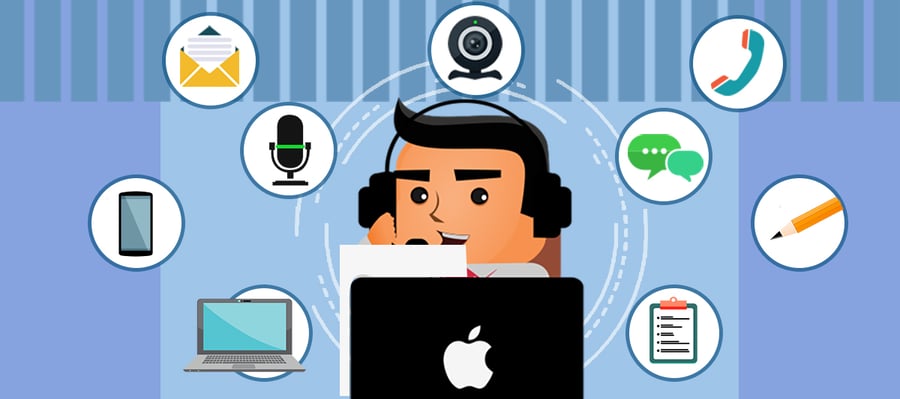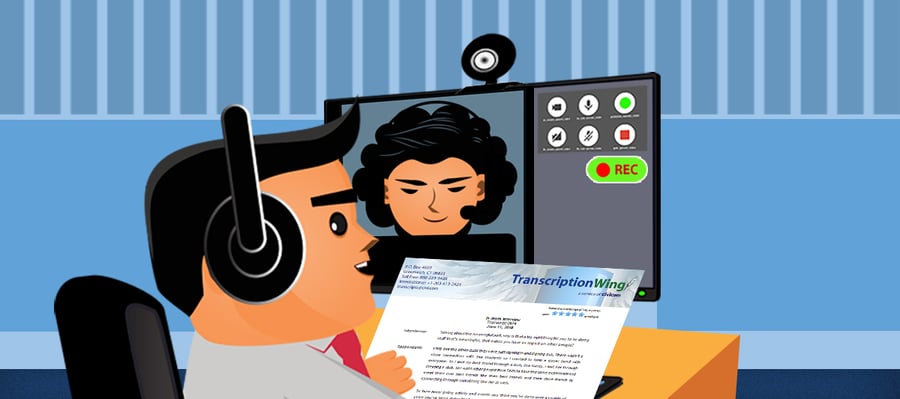Data interpretation and analysis are some of the most crucial parts of market research. Every step taken during the duration of the study leads to understanding and making sense of the gathered information. Depending on the type and scale of a project, the data may range from fifty to a few thousand specimens for translation. There is a multitude of ways to read and analyze these -- some may be as easy as running a formula on a certain program, while others might be more complicated, especially for most qualitative research.
Qualitative research is stringent, and often times, hardworking. Instead of interpreting numbers, it demands analysis of human behaviors, dynamics, and perspectives. Interviews and focus group discussions are among the usual methods used for this type of study and these are the type of data that can be complicated to interpret. One cannot just deduce feedback to just a few sentences -- each discussion needs to be thoroughly sifted through, read, and understood. Recordings are customary during interviews but the data are still best interpreted when read; thus, the importance of transcription.
What is Market Research Transcription?
Market research transcription is the process of making meaningful text documentation of gathered research information, making it an easy resource that can be used as a reference in further parts of the study. Capturing these insights and presenting it in highly accurate transcripts would not only be beneficial for the researcher but would also be helpful in future understanding the study, even long after it has been published.
This guide will discuss some concepts that would better explain and improve market research through transcription:
- Different Types of Transcription for Market Research
- Uses of Transcriptions in Market Research
- Tips for Recording Market Research Interviews
- Choosing the Right Market Research Transcriptionist
Different Types of Market Research Transcription

One of the integral parts of qualitative research is transcription. Used for converting audio or video recordings of interviews and discussions into a written file, market research transcription can usually be straight to the point -- listen to a recording and literally turn it into pages and pages of words.
However, since there are various modes of market research, there are corresponding types of transcription suitable for each. This can include interview transcriptions, focus group transcriptions, and audio transcriptions for other media assets derived from a market research study.
In-depth Interview Transcriptions

To break it down further, interview transcriptions or in-depth interview transcriptions can include one-on-one transcriptions (an interviewer and a respondent) and triad transcriptions (one interviewer and two respondents).
Focus Group Transcriptions

Focus group transcriptions on the other hand generally include transcribing a session of multiple participants engaged in a focused discussion on a particular topic. This can include small group transcription, opinion poll transcription, consumer forum transcription, and risk analysis transcription of panel sessions.
So what’s the difference? Isn’t it just interviewers and respondents talking?
Interviews are conducted in length by nature. Commonly known as in-depth interviews to market researchers, participants in general don’t just get asked yes or no questions in dyads or triads - there are a lot of probing and exploring involved so researchers can hone in on the consumer truths they are looking for from individuals. Because of this, in-depth interview transcriptions tend to be lengthy and would require the transcription of hours of recordings. This is why having a transcription service is crucial in getting interview transcriptions done - market researchers would rather spend their time analyzing and discovering insights than burn time transcribing hours of audio recording.
Meanwhile, unlike interview transcriptions where there are usually fewer people involved, focus group transcriptions require more attention to detail in terms of attribution. Since there are more people in group sessions, a market researcher faces the challenge of properly attributing which insights came from which respondent. Thus, focus group transcriptions usually need additional approaches in transcribing focus groups, such as speaker identification and verbatim transcription.
Mobile/Web Usability Session Transcriptions

People interact with technology on a daily basis, and companies utilize web and mobile portals for further exposure as well as to ensure accessibility to their products and services. Because of this, user experience or UX research has become increasingly important for companies to maximize their interaction and engagement with consumers. Transcriptions of usability sessions consist of converting the audio or video capture of respondents while they test the website or mobile app of a service. A usability session transcript can include dialogue between an interviewer and a respondent as well as additional remarks on the platform, website, or app as it is being evaluated.
Mobile Market Research Transcriptions
Respondents can record audio diaries or video clips of themselves using mobile devices as they react to a product or a service while doing a series of tasks. This can also involve audio and video recordings taken from a mystery shopper session where a respondent provides feedback while in-store. These snippets are then collected by the market researcher and can be better catalogued and analyzed with the help of transcriptions. Transcripts help the researcher easily review and reference the responses for later use.
Additionally, there are three main categories of transcription methods. Depending on the client's preference and the study's background, market research transcription can be approached through any of these methods:
Verbatim Transcription
Probably the most complicated and time-consuming type of transcription, verbatim requires transcribers to jot down each spoken word -- including laughs, expressions, whispers, and even mumbled words. This type of transcription does not give importance to correctness but instead focuses on preciseness. It is also usually accompanied by timestamps and is an exact word-per-word interpretation of the original file. Because of its meticulous nature, verbatim transcriptions can be more expensive than the others. However, unlike the other types of transcription, verbatim can be done by anyone with sharp listening skills and patience.
Edited Transcription
As the name suggests, edited transcriptions are less strict, and transcribers are allowed to take out parts of the audio or video file as long as the original meaning remains. They can take out fillers, omit mumbled words, as well as some incoherent sentences, among many others.
This type of transcription usually requires someone that has an understanding and background of the study. While they cannot completely take out details that they may deem unnecessary, it is still important for them to know the gist of the project, just so they will have better decision-making skills when it comes to taking out some words and emotions from the final manuscript. The goal of this type of transcription is to create a 'clutter-free' yet accurate written account of the recording.
Intelligent Transcription
The last category is the most straightforward out of all the types of transcription. Intelligent transcription usually omits everything that does not need to be included on the transcript. The difference between 'intelligent transcription' and 'edited transcription' is that most manuscripts under this category include grammatical corrections. Additionally, more information is allowed to be taken out based on the transcriber's discretion. Most often than not, this is usually done by someone who is a part of the study and has an extensive knowledge of the project. This makes the decision-making an easier process, and also assures the researcher that the final transcript is accurate and valuable for the study.
Uses of Transcriptions in Market Research

- Market Research Stimuli
The use of transcription in market research is not limited to after-interview sessions. Transcriptions can also be used in the research proper as stimuli. A good example is supplementing video stimuli with transcriptions or subtitles for respondents who speak another language or have limited language proficiency. This ensures accessibility and inclusivity since different population segments can participate in a study.
- Accurate Speaker Attribution
Transcriptions heighten the reliability of research findings by accurate speaker attribution, especially in a focus group setting where there are many participants. Speakers can be identified in transcripts by role such as “moderator” or “respondent”, by names or titles, or by their assigned labels in the study.
- Documentation and Tagging
Researchers can tag specific segments of transcripts for quicker reference and analysis. They can add markers such as [Response to Question #1] or [Additional response to Question #2] or any other text that will assist them and their colleagues’ further study. Researchers can add descriptive markers such as, [Respondent describes favorite product features here], [Respondent describes frustrations here], or [Respondent offers suggestions for improvement here].
Alternatively, researchers can tag speakers by name or number, (e.g., Speaker 1, Speaker 2, etc.). They may also want to document where different activities occurred or where stimuli were shown. These types of additions allow researchers to reference particular sections easier later.
Another type of tagging involves timestamps. These allow whoever is reading the transcript to quickly identify its corresponding time in the audio recording. This makes playback of particular sections much easier than starting at the beginning of the audio recording and searching for certain references. Timestamps can be placed at specific time intervals (e.g. per minute), at speaker changes, or customized to a researcher’s needs.
- Contextual Analysis and Review
While respondent clips can be a useful reporting tool later - timestamps, tagging, and additional documentation allow researchers to understand the original context of what was said in a clip and refer to the source material at the appropriate juncture. This feature is particularly helpful if an outside moderator or colleague conducted the actual research and the person reviewing the files is unfamiliar with the dialogue.
Clips can be good for highlighting and condensing material, but they may be confusing or misleading without the option for contextual analysis.
Perhaps the greatest benefit to transcribing market research source material is improved searchability for superior review. Rather than skimming audio or video, pausing, and taking notes, researchers can search transcriptions for particular words or phrases, documented events, or selected tags. Review becomes more efficient and researchers can spend more time uncovering relevant insights than listening to hours of irrelevant audio.
- Reporting
Marketing researchers gather a substantial amount of material, but most know that their end clients only want to hear the highlights to understand how their strategies, goals, and actions should change. Transcriptions allow researchers to easily copy and paste key quotes into reports for their clients. While paraphrasing and summarizing what respondents said is also necessary, using quotes strategically can be very impactful.
The searchability of transcriptions also enables faster data gathering to report statistics. For instance, researchers can note how often certain descriptive words were used (e.g., “hip,” “boring,” “fast,” “frustrating”), how many respondents preferred one type of packaging over another, and additional details that could be transformed into charts, graphs, or infographics.
Audio Recording Tips for Easier and More Accurate Market Research Transcriptions

It is extremely important for a researcher to gather only reliable insights from accurate transcripts. Therefore, clear and audible interview recordings are just as important in the market research process. While video recordings are often preferred because of the visual cues that transcribers get from the on-screen interactions, most market research sessions are still recorded via audio for the participant's privacy and confidentiality.
Increasing the audio quality can sometimes be tricky, but there are many ways to do this without the need to buy additional fancy equipment.
Here are a few tips on how you can capture better quality audio for market research transcription:
- Make sure that all mobile phones in the room are switched off
This is to avoid feedback and unnecessary noise during interviews. The 'frequency' that the phone receives when receiving messages and calls can sometimes interfere with the device and can be a distraction in the overall recording. It can also result in lost data, drowning out the original words that were given by the participant.
- Test the device
While this may seem obvious, there are still many interviewers who seem to forget this step and would end up having low-quality files because of technical difficulties. Being prepared before recording would avoid many unintentional issues that may come up with transcriptions and data interpretations.
- Choose a quiet venue
Being in the right environment, away from crowds and unnecessary background noise will be helpful in capturing better quality recording. If there is no other choice but to conduct the interview in a relatively loud area, using HQ microphones would be a good option.
- Ask for speaker identification when necessary
This is especially helpful for focus group discussions and interviews with multiple participants. It would be best to ask them to identify themselves before speaking, making it easier for the transcriber to note who to credit for the answers.
- Repeat or paraphrase answers
Giving out little commentaries or repeating answers would significantly assist the transcriber in capturing a more accurate audio. This is most especially true for participants who may have a strong accent or who may be soft spoken.
Choosing the Right Transcriber

While there are many available transcribers on the internet and other platforms, what makes a market research transcriber different is their knowledge and expertise to wade through unfamiliar data. Aside from putting the audio recordings into words, it is also important that the transcriber has an understanding of the study, as well as an idea of the necessary information.
Most market research transcriptions do not only submit detailed manuscripts but also includes feedback on the recordings that they have transcribed. Transcribers have the responsibility of creating sensible manuscripts; something that would be beneficial for further interpretations.
Additionally, transcribers must also provide confidentiality and security to all the data that they will handle. It is necessary that contracts are drafted and screenings are conducted before proceeding with the project. While some recording may not include sensitive information, these data are still considered classified, especially since it includes the identification of some participants.
While it is ideal to have an in-house transcriber, considering third-party suppliers must be well-thought of. They must be screened accordingly and checked if they can meet the requirements that are necessary to create an intelligent transcription for the study.
Sources:
http://resets.org/market-research-transcription/
https://www.speechpad.com/blog/types-of-transcription
https://www.escribetranscription.com.au/research/market-research-transcription/
https://www.escribetranscription.com.au/audio-recording-tips/
https://www.thespruce.com/types-of-transcription-3542498
https://www.voxtab.com/market-research-transcription.htm
https://www.businessnewsdaily.com/8847-best-medical-transcription-services.html



